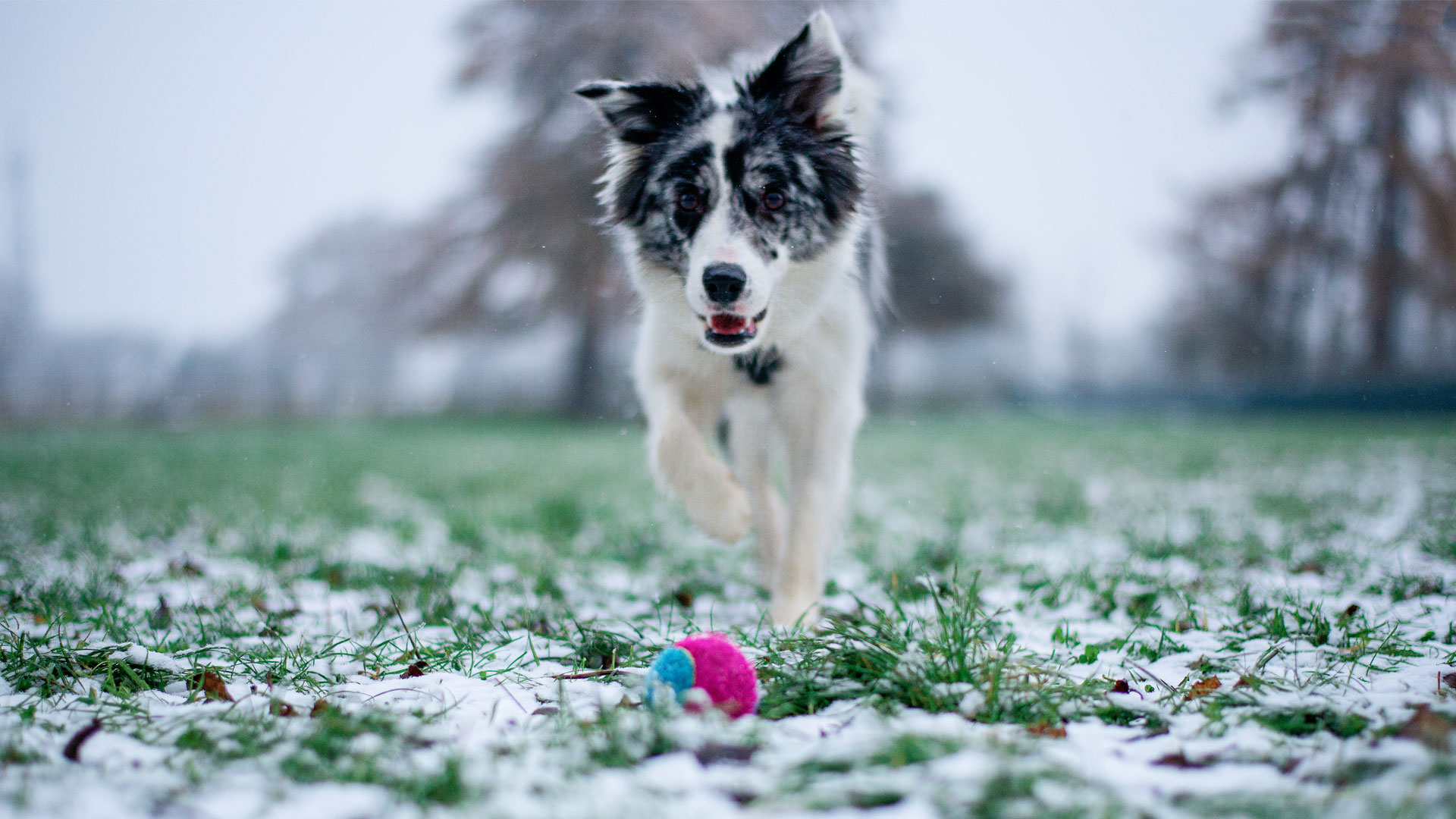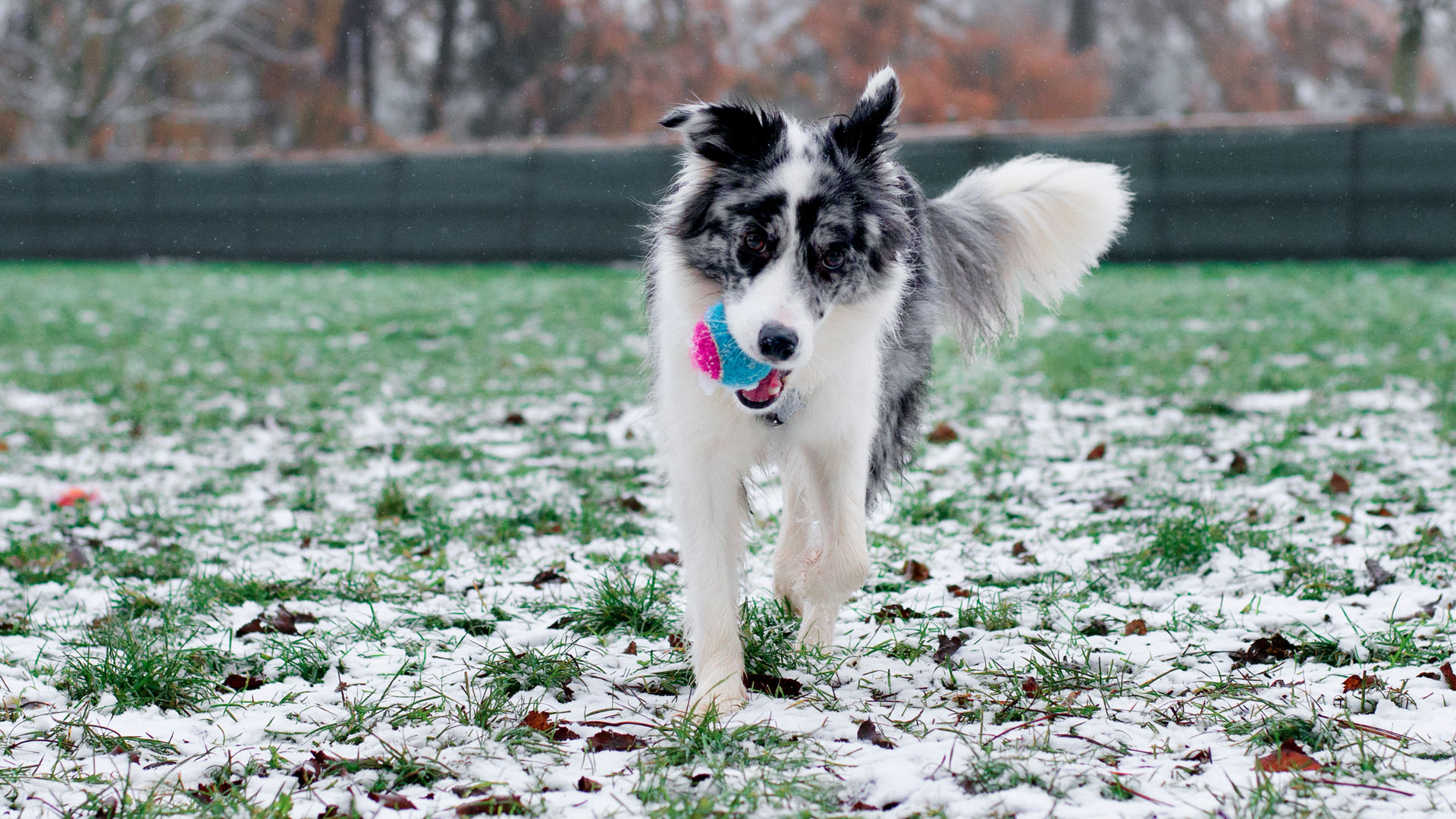You're playing fetch with your dog all wrong – make one simple change for a healthier, happier dog
Playing an exciting game of Fetch is a fun way to interact with your dog, but you could be teaching them bad habits…

“What on earth could be wrong with a good game of Fetch?” I hear you cry. Yes, I recognize that besmirching the name of one of the most popular games we can play with our dogs might not be a particularly welcome opinion. After all, playing Fetch is often used to tire out high-energy dogs that might otherwise expend that energy zooming around the house. However, there’s good reason to take some time to consider exactly how you’re playing this game with your dog.
As the owner of a border collie, I was given two different strains of advice when we first brought her home as a puppy. The first type came from well-meaning fellow collie owners at the park, telling me that the best thing I could do was give my border collie “a job” by playing Fetch with one of the best dog toys. The second, much more emphatic type came from Fenwick’s own dog trainer, Lara Sorisi, who explained that this could have a detrimental effect on her health.
Lara, an APDT-certified dog trainer, and a championship gundog trainer, says that, “One of the things that’s important for owners to consider is the age of their dogs. There’s a reason that puppies don’t do agility until they’re 12-18 months old. Anything going from stop to start at a fast sprint is really bad for a young adolescent dog or puppy. I’ve personally seen too many cases of dogs with behavioral issues that are due to pain that have been caused from having a ball thrown for them in an inappropriate manner.”
“I also see many dogs that become really fixated on balls and frisbees, which can be really detrimental. Ball throwers are really popular amongst dog owners, but they can be used and abused too much – with some owners using them to exercise their dog, rather than just as a little bit of enrichment.”
So, does that mean that you should stop playing Fetch altogether? Not at all. There’s a way to play retrieving games that are super fun for your dog, but don’t invite the potential issues that Fetch can. However, before we explore how to upgrade your game of Fetch, what exactly is the ‘wrong’ way to play it?
Are you playing Fetch wrong?
Do you fling the ball as far as you can and let your dog immediately chase after it? If so, you’re among the majority of dog owners that play Fetch. However, there are some health and behavioral considerations that could crop up from this practice. Unfortunately, while these potential issues aren’t often spoken about amongst the general public, they can have real consequences for your dog.
One of the most common issues is the dog developing an OCD-like ball obsession. While many dogs can get excited about playing Fetch, a ball obsession takes this enthusiasm a step further, with dogs becoming anxious and fixated. Rather than enjoying themselves, ball-obsessed dogs can almost fall into a trance when the ball appears – as if nothing else exists for them at that moment except for the ball.
Get the best advice, tips and top tech for your beloved Pets
But what is it about Fetch that makes it so captivating for dogs? Lara says, “Most dogs are designed to do a job and have a predatory motor pattern, which follows the Orient > Eye > Stalk > Chase > Grab/ Bite > Kill/ Bite > Dissect > Consume sequence. Chasing after a tennis ball follows a lot of this sequence – they orient themselves on the ball, they chase after it and they fulfill the Grab/Bite when they pick it up. It does match many dogs’ motor patterns and needs, so if they’re not getting them met elsewhere in a more appropriate way, it can satisfy that need, especially for highly driven dogs.”
A ball obsession can have serious consequences, even aside from the impact it can have on your dog’s mental health. It can lead dogs to overexert themselves running after a ball, continuing to play Fetch even when they’re tired or injured. If nothing is more rewarding to them than running after a ball, it can also lead them to ignore important recall or leave-it commands, which can put their safety at risk.
Lara adds that ball throwers can make games of Fetch even more difficult to regulate. “I’ve known of multiple cases of dogs being attacked due to their fixation on this game. A personal friend of mine used to use a ball thrower, but on one instance when they didn’t have it with them, their dog ran towards someone who had one, whose own dog then attacked. This situation is caused by the ball or frisbee becoming so high value that nothing else matters. You could offer these dogs a piece of steak or the ball, and it’ll be the ball every time.

Lara went on to explain that the environment in which you play Fetch can also be important to consider. “I’ve seen many owners use ball throwers in inappropriate places. Someone I know was using one across a concrete floor – their dog jumped up for the ball, landed awkwardly on its back, broke it and unfortunately had to be put to sleep.”
While this is an extreme example, it shows how dangerous allowing and fostering a ball obsession can potentially be. Lara adds, “a dog walk is meant to involve the dog engaging with you and its environment – not to be chasing back and forth after a ball just because it’s an easier way to exercise it.”
As Fenwick’s owner, I regularly thank my lucky stars that I listened to Lara’s initial advice. Border collies can be particularly prone to becoming obsessive, and I’ve personally seen Fenwick become reactive to both cars and reflecting lights as she matured into her teenage stage. With careful and patient training, Fenwick has overcome these fixations. However, I’m absolutely convinced that she would have become ball-obsessed if we’d played regular games of Fetch with her.
How can you transform your game of Fetch?
Playing retrieving games can actually be a fantastic way to challenge and improve your dog’s impulse control. This means that not only can you physically tire out your dog, but you can also tax their brain and do some really useful training at the same time. The main difference that you’ll need to enact is teaching your dog to wait before you send them to retrieve the ball.
We asked Lara how you can start to teach your dog a proper retrieve. “One of the most important things you can do to transform your game of Fetch is to introduce a start cue and a finish cue, as this will help teach your dog when it’s time to calm down. One of the biggest issues with ball throwers is that you often see the dogs walking backward, waiting for the ball to be thrown. A good finish cue will ensure they know the game is over.”
However, to truly take your game of Fetch to the next level, try to introduce a good wait cue. This means that after you’ve thrown the toy, your dog should wait patiently to be released to retrieve it for you. You might be wondering how on earth you can train this into your dog if they’ve already got a super high drive for the ball.
However, Lara has a great tip, “When you first introduce your Wait command, you’ve got to make the movement and presentation of the toy nice and calm. You would start with having the toy in your hand, calmly placing it on the floor to desensitize the movement, and then asking your dog to retrieve it. Over time, you would then slowly introduce dropping the toy and then eventually work into throwing it.”
Ultimately, we all want our dogs to be happy and healthy. While some dogs can go their entire lives playing Fetch without an issue, there are a sizable proportion that will, unfortunately, struggle with this game. If you ever notice signs of obsession, stress, or even aggression in your dog when playing Fetch, you might want to reconsider the way that you’re playing it.
Alternatively, if you believe that your dog is perfectly fine playing Fetch, then why not try building in regular breaks into your games to give your dog a rest (scattering some treats on the floor for a snuffling session is a great way to calm a dog down).
Looking for other ideas for enriching your dog? Find out what happened when we tried out a 45-minute sniffari.
Louise Carey is a freelance writer and the Editor of sister website Top Ten Reviews. She has been working in publishing for seven years, contributing to publications including The Independent, TechRadar, Digital Camera World and more. As the proud pet parent of a reactive border collie with a food allergy, it’s been necessary for Louise to explore a variety of fun and exciting ways to enrich an energetic dog that can’t always go on walks. She’s passionate about sharing the information she’s learned to help other pet owners as well.

